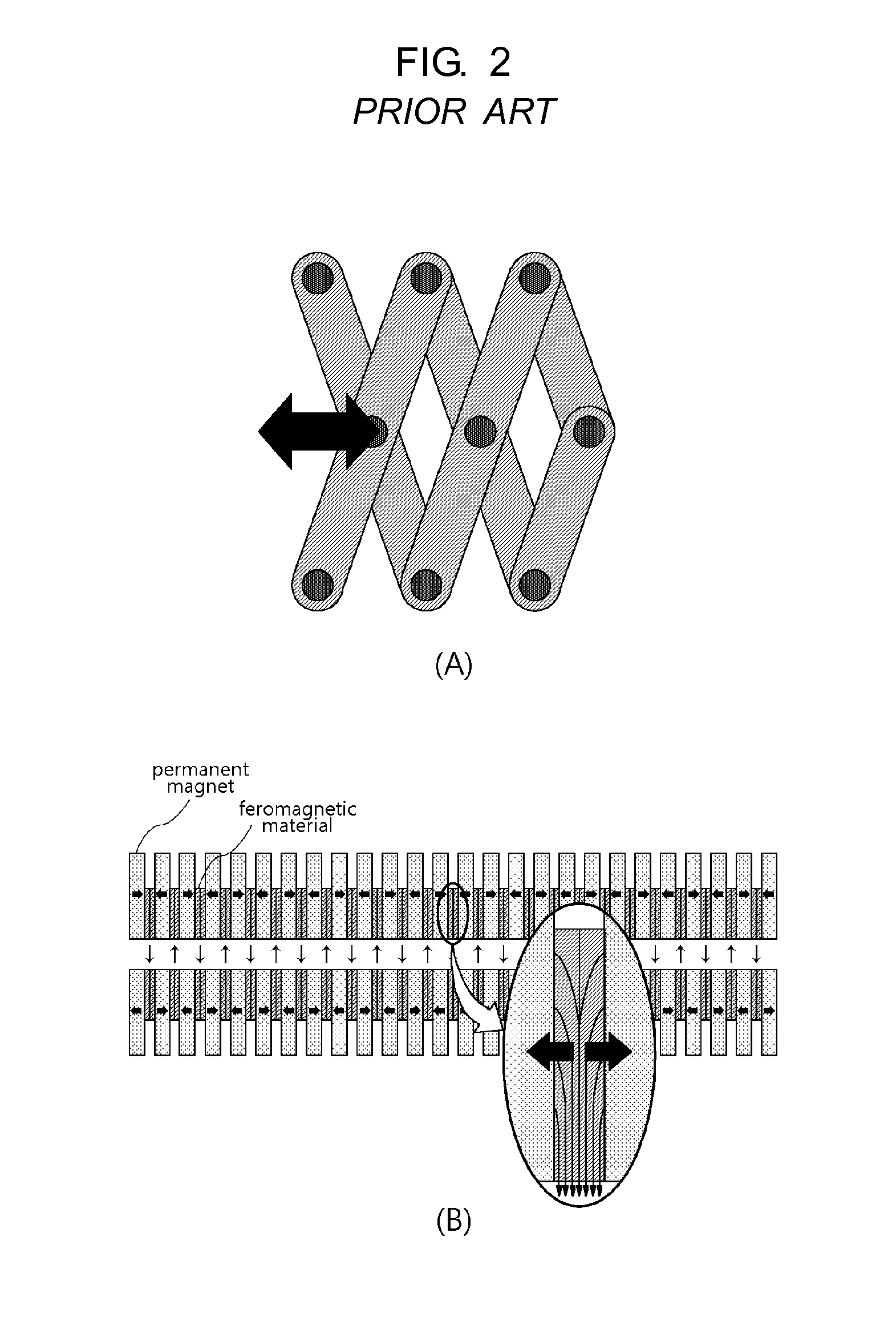Variable-cycle permanent-magnet undulator
a permanent magnet and undulator technology, applied in the direction of permanent magnets, magnetic bodies, magnetic materials, etc., can solve the problems of structurally difficult to adjust the gap between the magnets, the gap space of the undulator may easily change in size, and the structure in which the magnetic field is adjusted in strength to adjust the wavelength of the radiation, etc., to achieve the effect of more stably adjusting the radiation wavelength, adjusting the period of the magnetic field, and sufficient strong magnetic field
- Summary
- Abstract
- Description
- Claims
- Application Information
AI Technical Summary
Benefits of technology
Problems solved by technology
Method used
Image
Examples
Embodiment Construction
[0051]Hereinafter, a variable-period permanent-magnet undulator including the above-described constitutions according to the present invention will be described in detail with reference to the accompanying drawings.
[0052]The variable-period undulator according to the present invention fundamentally generates magnetic fields by using a permanent magnet. Thus, the variable-period undulator according to the present invention may generate magnetic fields that are very stable and strong without power consumption when compared to an undulator that generates magnetic fields by using an electromagnet. Also, the variable-period undulator according to the present invention may vary in period of a magnetic field to adjust a wavelength of radiation as well known in its name. Thus, the variable-period undulator according to the present invention may realize the output power of the stable radiation without changing in output power of the radiation and also freely adjust the wavelength of the radi...
PUM
| Property | Measurement | Unit |
|---|---|---|
| angle | aaaaa | aaaaa |
| magnetic flux | aaaaa | aaaaa |
| magnetic fields | aaaaa | aaaaa |
Abstract
Description
Claims
Application Information
 Login to View More
Login to View More - R&D
- Intellectual Property
- Life Sciences
- Materials
- Tech Scout
- Unparalleled Data Quality
- Higher Quality Content
- 60% Fewer Hallucinations
Browse by: Latest US Patents, China's latest patents, Technical Efficacy Thesaurus, Application Domain, Technology Topic, Popular Technical Reports.
© 2025 PatSnap. All rights reserved.Legal|Privacy policy|Modern Slavery Act Transparency Statement|Sitemap|About US| Contact US: help@patsnap.com



